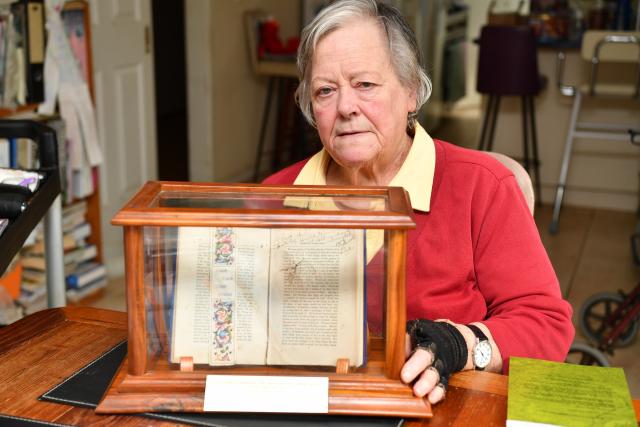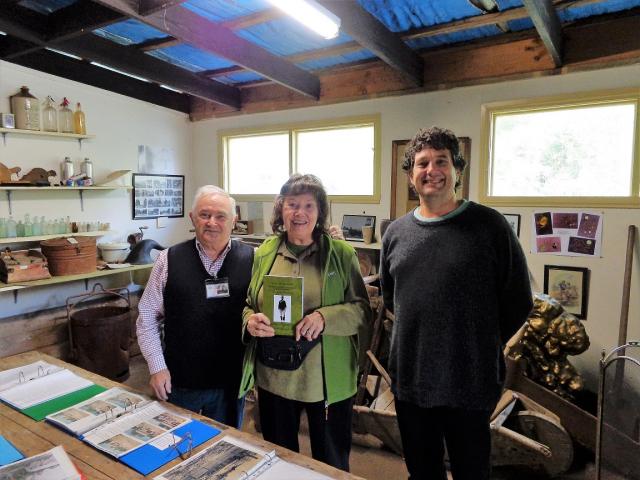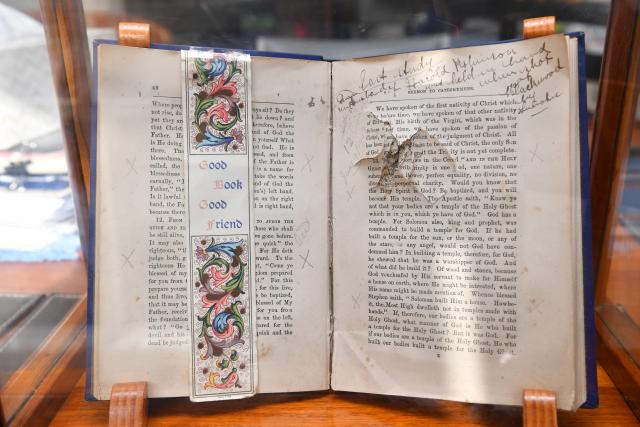
Liam McNally
A Moorabool historian has spent half of the last century collating information about Blackwood history, a town near the north-west corner for the Lerderderg State Park. Margot Hitchcock has documented a rich history of an early Victorian mining town, but old newspaper documents also uncovered a striking tale of madness and murder that Ms Hitchcock has dubbed “The Billy Pincombe Tragedy”, as Liam McNally discovers.
“She kept repeating the biblical injunction, ‘If thy right hand offends thee, cut it off – my right hand hath offended me.’
She was found in the yard later with an axe in her left hand and her right hand severed at the wrist.”
This is how The Leader newspaper described an incident involving Annie Pincombe in an article from over 100 years ago.
Ms Pincombe was a resident of Blackwood as the town was winding down from the gold-mining boom it was built on.
In 1906 she was incarcerated at a nearby “lunatic asylum”. Her husband, gold-miner Billy Pincombe, blamed the local preacher Harold Robinson, for his wife’s diagnosis of “religious mania”.
At noon on Friday June 19, 1908, Mr Robinson was pacing on the verandah of his vicarage next to All Saints Anglican Church in Blackwood reading a religious text – On Faith and the Creed by C.A. Heurtley.
All the while, Mr Pincombe, a “crack shot” of the Blackwood Rifle Club, lay on his bed in his house opposite, with his gun aimed through a partially opened window.
When Mr Pincombe let his shot fly, the bullet pierced the preacher’s book and came to rest in his heart.
Mr Robinson died reading St Augustine’s Sermon to Catechumens, containing the prophetic lines of the “quick and the dead… He doth judge both, giving to each their due reward”.
Shortly after a shootout occurred between Mr Picombe and police constable Charles Saunders.
The encounter left the constable with a bullet wound in his shoulder, and Mr Pincombe was shot in the head.
Mr Pincombe died of his wound six days later on June 25, 1908.
On the same day as Mr Pincombe’s death The Age reported on the “exceptional courage” of the police officer “in confronting a man such as M r Pincombe”, and on July 10 constable Suanders received a Valour Medal and £50.
This dramatic sequence of events is the centre of a book by Blackwood historian Margot Hitchcock, The Billy Pincombe Tragedy, who said she felt it was “a story that had to be told”.
“It’s like Captain Moonlite, Ned Kelly, All these stories if they’re not told, they’re lost in time. I thought it was my job to let it be known what happened, to keep our history alive,” she said.
Ms Hitchcock’s connection to Blackwood began with her holidaying at a house her grandfather had built there in 1929.
In 1973 Ms Hitchcock was a founding member of the Blackwood Historical Society that converted the old Blackwood police stables into the Police Stable Museum.
On March 11 the historical S=society, which Ms Hitchcock is the last original member of, celebrated its 50th anniversary.
The museum opened to the public for its birthday, and displayed The Billy Pincombe Tragedy, along with a surviving artefact from the episode – the preacher’s religious text with a bullet hole in its centre.
Ms Hitchcock, who is now 83 years old, said she is still “passionate” about her role as Blackwood’s historian.
She said the story of Blackwood is one of a 19th century gold rush town that has slowly transitioned into a luscious holiday destination, with a “tremendous community” keeping it going at its core.
“I just love the history of the area … I’m on my computer every day,” she said.
Ms Hitchcock said she met a man at the historical society’s 50th anniversary who said his great, great grandfather, Henry Lawson, lived in Blackwood.
Ms Hitchcock was able to find that Mr Lawson died in Blackwood in 1855 and has one of the oldest headstones in the town, and was able to direct the grandson to his ancestors gravesite.
“It’s exciting, when I find something that’s rewarding or something that’s interesting to somebody else, I feel really happy that I can do that,” she said.
“I had a stroke 14 years ago and when I was in rehab I asked to use their computer, and I think that it’s what got my brain going again, because it made me think.”
Ms Hitchock has another book, a 700 page epic titled Blackwood History and Pioneers.
She said she is unsure how she is going to publish it, but wants the story told.
“I don’t want it to be not published when I’m gone, I want it to be there for the people to know all the history I’ve researched,” she said.
The display Tragedy of Billy Pincombe Display will be available to the public over Easter weekend during the Blackwood Woodchop and Easter Carnival.
The Blackwood Historical Society will be holding stalls on Saturday, April 9, and opening the Police Stable Museum, with the Pincombe display, on Sunday, April 10, from 10am to 1pm.
Historical society secretary Elizabeth Hall said getting up close to the bullet-holed book is “surreal”.
“It’s intriguing just to think that something like that happened in Blackwood,” she said.
“Blackwood is a lovely place to come to, and it has got so much history, and we really need to keep this history going, we don’t want to shut it away.”








